Where to Find Bamboo in North Dakota
Bamboo is not native to North Dakota. The cold winter weather can prove challenging for gardeners attempting to grow bamboo in this upper midwestern state. However, certain species of bamboo are cold-hardy and can survive colder climates. With that in mind, you may successfully grow bamboo in North Dakota if you cultivate specific species and protect them from the harshest winter weather. Before planting bamboo in North Dakota, consult a local horticulturist or plant expert. This will allow you to get expert advice on choosing a bamboo species suitable for the particular climate and environmental conditions of North Dakota.
Typically, bamboo grows well without too much care or attention. In a state like North Dakota, it may need a little bit more help. Bamboo generally grows well in organically-rich soil with good drainage in places with ample sunlight and warm weather. In North America, it is frequently grown as an ornamental plant or grown for commercial purposes – such as a renewable resource used as a material for many different plant-based products.
This article will take you through the challenges and benefits of growing bamboo in North Dakota. You will also learn about the botanical gardens, arboretums, and plant nurseries in North Dakota where you can see bamboo growing for yourself!

Though it is native to
Asia
, today, bamboo plants grow across the world in many different climates and soil conditions.
©Phuwadon Phichairat/Shutterstock.com
Challenges of Growing Bamboo in North Dakota
Although North Dakota’s climate does have extremely cold winters, this state also experiences wide variations in temperature over the year. North Dakota is a state in the northern part of the Great Plains region. There, the winter temperatures regularly drop below 0 degrees Fahrenheit. The winters are also often very windy, which contributes to a wind chill that makes the temperature feel even colder. However, summers can be warm, pleasant, sunny, and dry.
This may sound like an inhospitable environment in which to grow bamboo, a plant that typically thrives in moist areas with sun and warm temperatures. However, bamboo plants are extremely resilient and can adapt well to many different climates. Though it is native to Asia, today, bamboo plants grow across the world in many different climates and soil conditions. This includes bamboo that grows throughout the diverse geography and climates within the United States.
You may find that growing bamboo in North Dakota is a challenge, but one you can overcome with enough water, well-draining soil, fertilizer, protection from the harshest winter elements, and a cold-hardy species of bamboo.
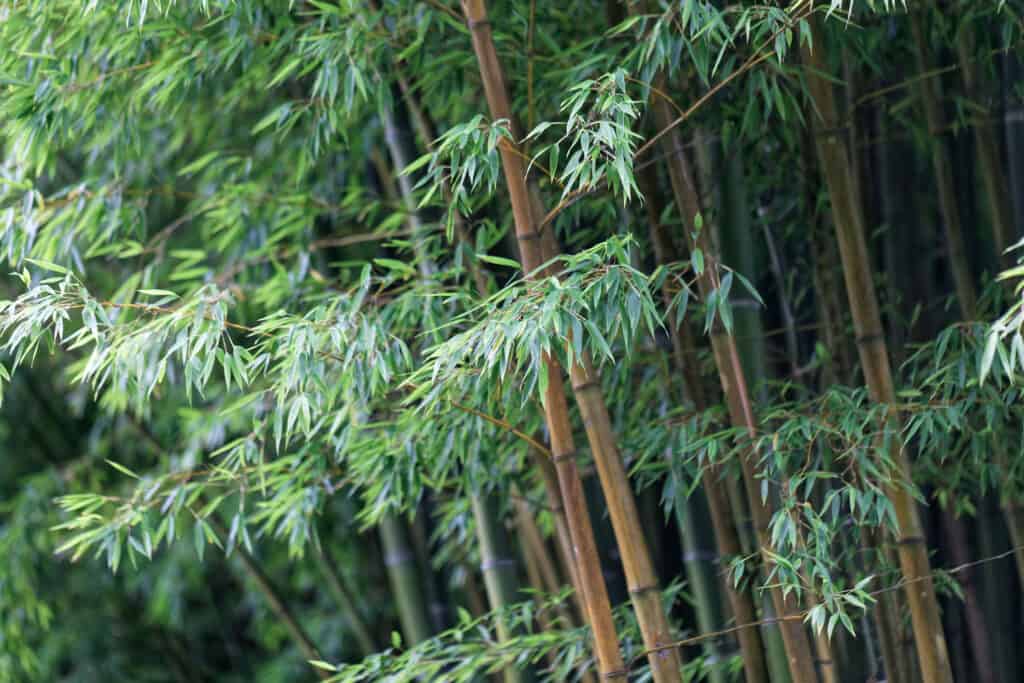
The most resilient, cold-hardy bamboo species that can grow in North Dakota include species such as Moso bamboo.
©iStock.com/weisschr
Bamboo Species to Grow in North Dakota
The most resilient, cold-hardy bamboo species that can grow in North Dakota include species such as Moso bamboo (Phyllostachys edulis), black bamboo (Phyllostachys nigra), golden bamboo (Phyllostachys aurea), arrow bamboo (Pseudosas japonica). Many of these species are known for being good choices to grow throughout the United States’ most northernmost regions, and in areas with extremely cold weather. In general, quite a few species in the Fargesia genus, known as “Fargesias,” are known to be cold-hardy. The group of plants in the Phyllostachys genus, which includes several species named above, are also quite cold-hardy.
According to some plant experts, the variation Phyllostachys manii ‘Decora,’ also known as “Beautiful Bamboo,” may be a good choice for growing bamboo in North Dakota. This variation has colorful colorings on its stalks that create a rainbow effect.
Additionally, the cold-hardy bamboo plant, Fargesia rufa, is a popular choice for growing in colder climates such as in North Dakota.
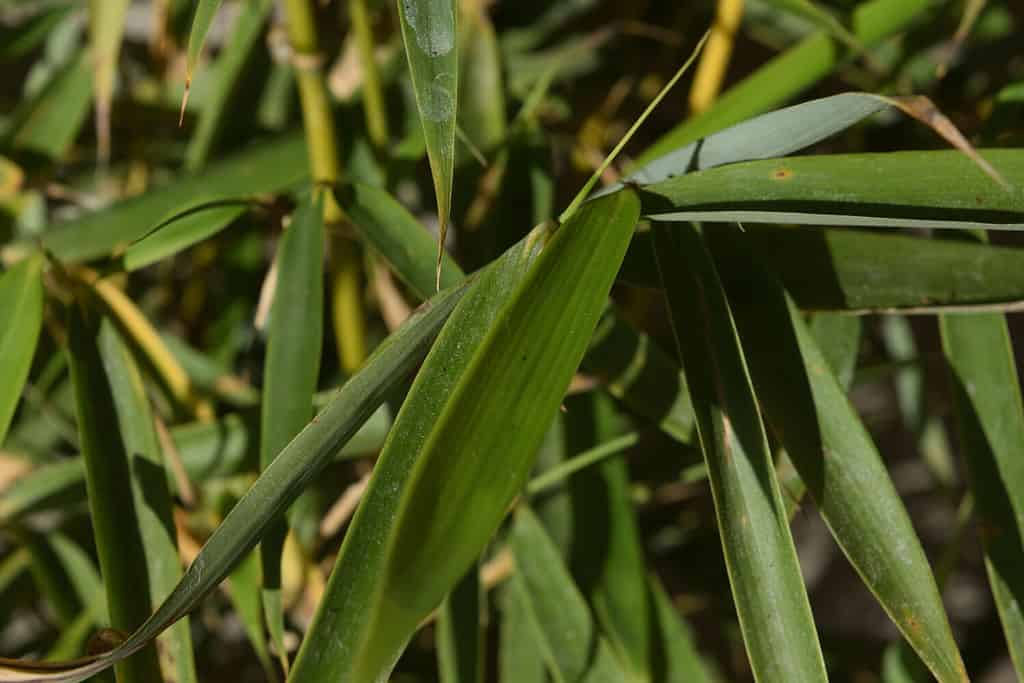
The cold-hardy bamboo plant, Fargesia rufa, is a popular choice for growing in colder climates such as North Dakota.
©silentstock639/Shutterstock.com
Benefits of Growing Bamboo in North Dakota
Despite these challenges, you may also find some benefits to growing bamboo in North Dakota. First, the dense root systems of bamboo can help to prevent soil erosion. Second, the tall, thick bamboo clusters can help provide natural shade and protect from strong winds. These thick groups of bamboo can also provide attractive, natural privacy screens. Third, bamboo can be a useful sustainable resource used for a wide array of projects. As a material in producing furniture, homes, textiles, and more, bamboo is a great sustainable alternative to other materials that have a detrimental environmental impact.
However, you must weigh these benefits along with the potential drawbacks of bamboo. In general, keep in mind the risk that this potentially-invasive species poses for local ecosystems.
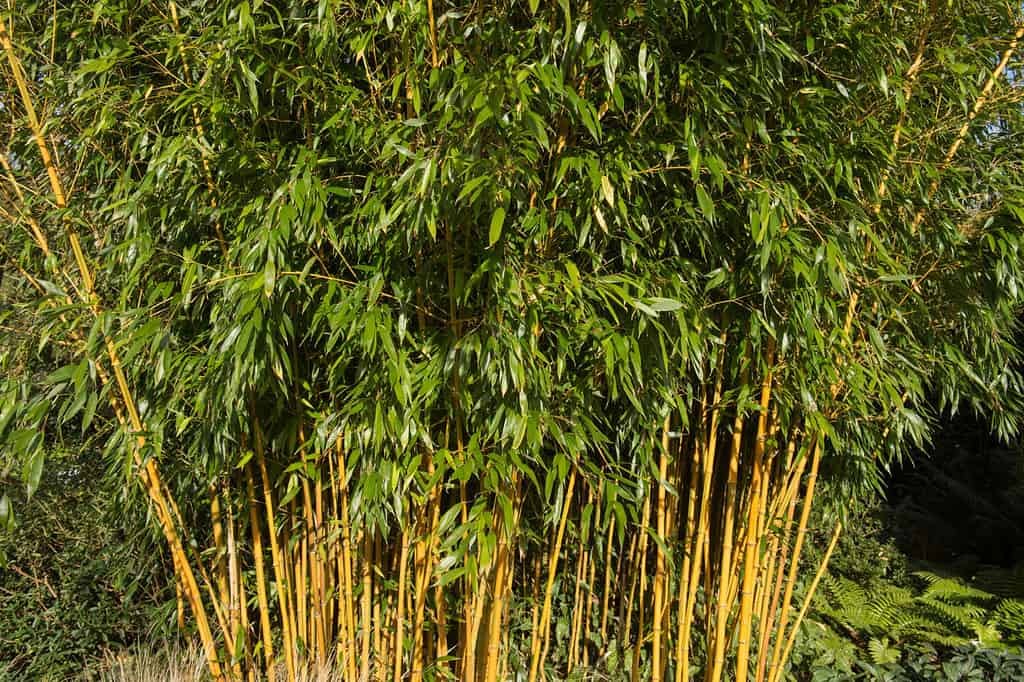
Bamboo is originally from Asia and is a type of grass that comes in over 1,000 (and potentially as many as 2,000) species.
©Peter Turner Photography/Shutterstock.com
About Bamboo
Bamboo is originally from Asia and is a type of grass that comes in over 1,000 (and potentially as many as 2,000) species. These belong to over 100 genera in the Poaceae family and the Bambusoideae subfamily. These many different species vary greatly in size, appearance, growing habits, and resilience to harsh climates. Because of this, different bamboo species grow in a broad range of ecosystems around the world, across continents. Bamboo can grow to great heights, with thick stalks that give the plants a tree-like appearance.
Bamboo has a long, rich history going back thousands of years. Because it is originally from Asia, bamboo has a long history in China. There, it has long been used for medicinal, culinary, and building purposes. Bamboo spread from China to other parts of Asia, including Japan and Southeast Asian countries. There, it became a vital part of local culture. Bamboo came to the West, including the United States, during the 1700s. Since then, bamboo has been a very popular ornamental plant and has begun rising in popularity as a renewable natural resource for construction, textiles, furniture, and food. Bamboo also grows throughout the United States as a landscaping feature.
Overall, bamboo has a long, rich, and interesting history. Its versatility and adaptability make it an important resource around the world. However, not everywhere is suitable for growing bamboo. Because bamboo does not grow natively in North Dakota, it can spread and become an invasive species threatening the native ecosystem. With that in mind, monitor your bamboo plants and manage their spread so that they do not take over your landscape.
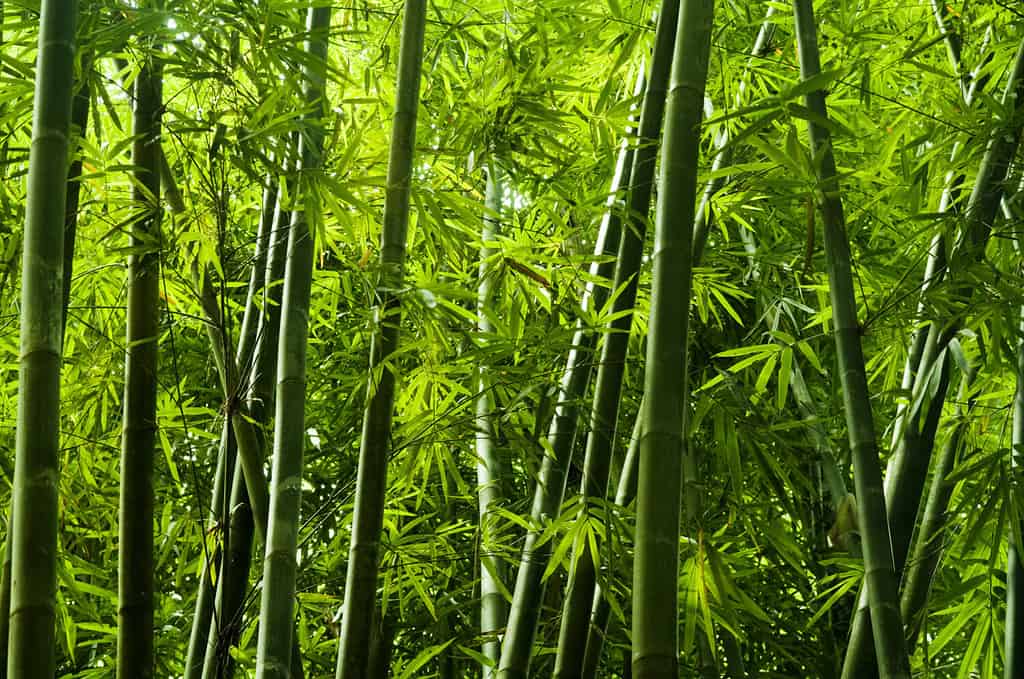
To see bamboo growing in North Dakota, consider visiting a botanical garden, arboretum, plant nursery, or conservatory.
©szefei/Shutterstock.com
Bamboo Arboretums and Gardens in North Dakota
To see bamboo growing in North Dakota, consider visiting a botanical garden, arboretum, plant nursery, or conservatory. If you are interested in seeing bamboo in North Dakota, it is a good idea to check your local botanical garden or commercial garden center to see if they have any bamboo displays. However, though there are several botanical gardens in North Dakota, you are unlikely to find large displays of bamboo growing there. This is because bamboo is not native to North Dakota. Growing it in this state may not be feasible for the average person, or sustainable given the local climate.
However, the list below is a partial roundup of some places where you may find bamboo growing in North Dakota. Check and see if they have bamboo in their collections.
Please take note that these botanical gardens and plant nurseries often have seasonal hours. They may also change their hours or admission fees because of special events or construction on their grounds. Some botanical gardens are free, while others charge admission fees. With these factors in mind, you should check online or give them a call while planning your visit. This will allow you to check that the information below is up-to-date and schedule your visit accordingly.
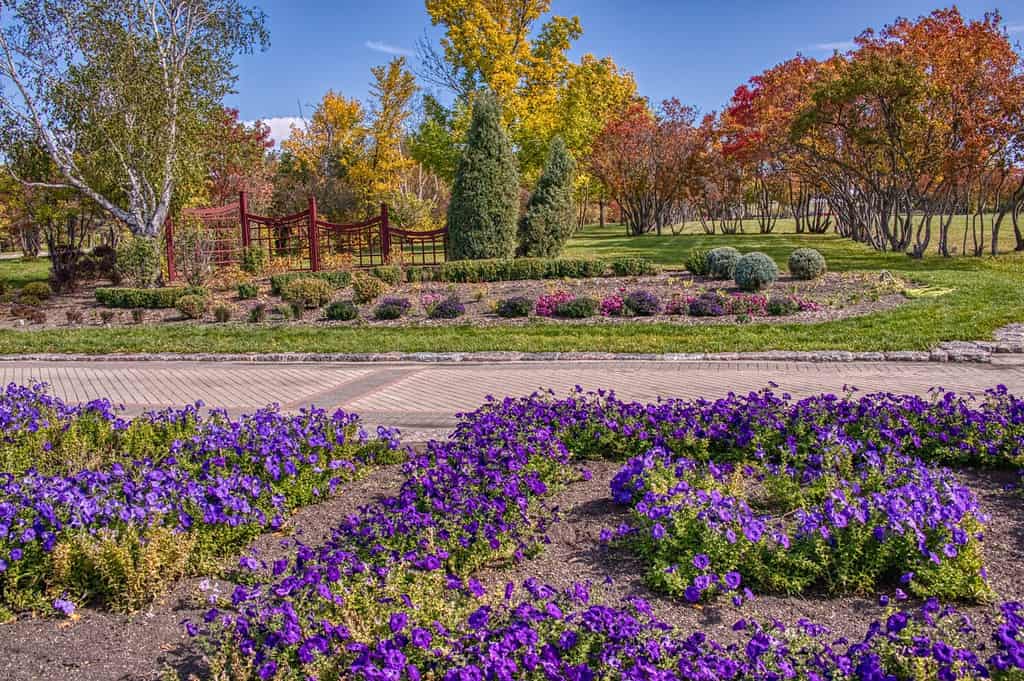
The International Peace Garden is focused on promoting peace and friendship between Canada and the United States.
©Jacob Boomsma/Shutterstock.com
North Dakota State University Horticulture Research and Demonstration Gardens
The North Dakota State University (NDSU) Horticulture Research and Demonstration Gardens in Fargo is a unique educational center for learning and research. The gardens, which are maintained by NDSU, feature many different trees, shrubs, and perennials. The plant collection in the garden includes daylily cultivars and a large iris collection. This is a great place to learn about gardening techniques and strategies for cultivating native plants.
The NDSU Horticulture Research and Demonstration Gardens are open for formal and informal tours during the summer months. Visitors have the choice to attend a guided tour or walk the gardens independently to enjoy the natural beauty. Go online to the gardens’ website to contact the research team and schedule your visit!
International Peace Garden
The International Peace Garden, which is on the border of North Dakota and Manitoba, Canada, is considered an accomplishment of North America. This garden is focused on promoting peace and friendship between Canada and the United States. The garden is a “living monument” to friendship and cooperation between the nations. The garden grounds are scenic 2,300 acres. Across the land, there are two freshwater lakes, wildflower fields, waterfalls, lots of native plants and animals, birds, and insects, and many scenic hiking and driving trails.
The International Peace Garden is open daily from 8 a.m. to 8 p.m. The daily off-season admission costs are $15. Because this garden is on the American and Canadian border, it is a good idea to check the website’s Frequently Asked Questions page for advice on navigating the international border and bringing the required documentation.
Red River Zoo
Red River Zoo, in Fargo, seeks to connect the community to nature and inspire people to help save animal species. This 90-acre zoo has hundreds of animals, birds, reptiles, and fish. Each year, over 150,000 people visit the zoo to see more than 125 different species and enjoy learning and connecting to the natural world. The Red River Zoo includes a botanical garden area with many different plants and flowers and a butterfly garden for interactive learning.
The zoo also includes a red panda exhibit. In addition to visiting the zoo, you can choose to purchase an interactive red panda experience to meet with the panda zookeepers, meet a red panda up close, and see where the pandas live when not on display for the whole zoo. Because part of the native red panda habitat is bamboo, and they eat bamboo as a snack, you can see bamboo growing in their panda home!
The Red River Zoo is open daily from 10 a.m. to 5 p.m., with opportunities for one-day admission as well as separate admission fees for special events and exhibits. Tickets for adults are $13.75, seniors are $12.75, children aged 2 to 14 are $11.25, and children under the age of 2 are free.
Other Places to Find Bamboo in North Dakota
If you go on a quest to find bamboo in North Dakota, you are more likely to find bamboo groves growing successfully in private homes and gardens than in botanical gardens. According to online plant forums and landscaping discussions, quite a few people grow bamboo successfully in their home landscapes or for commercial landscaping projects. Because of that, you may find these individuals and businesses to have the answers you need about the challenges and benefits of growing bamboo in North Dakota. Consider talking with a local expert to get the advice you need to grow bamboo even in the unique North Dakotan environment. You could reach out to one of the gardens listed above or consult another local gardening expert.
Thank you for reading! Have some feedback for us? Contact the AZ Animals editorial team.








